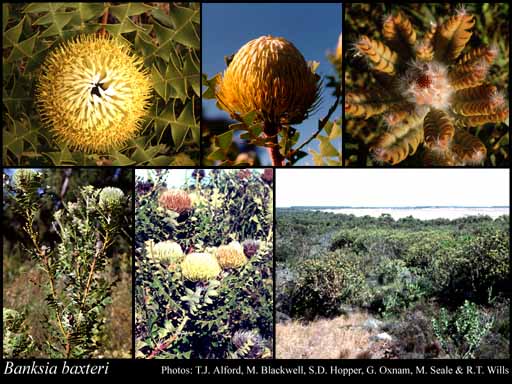- Reference
- Prodr. Suppl. 36 (1830)
- Conservation Code
- Not threatened
- Naturalised Status
- Native to Western Australia
- Name Status
- Current
Non-lignotuberous shrub, 1.7-4 m high. Fl. yellow, Aug to Sep or Dec or Jan to May. White or grey sand. Sandplains, consolidated sand dunes.

Scientific Description
Shrubs, 1-2 m high; branchlets glabrous or hairy. Leaves petiolate, alternate, 80-210 mm long, 30-60 mm wide, hairy; petiole 10-15 mm long; lamina flat, once divided, pinnately divided, divided to the midrib, with 6-9 lobes on each side, the margins flat. Inflorescences villous (with soft, shaggy, weak and straight hairs), yellow; innermost bracts 8-10 mm long, hairy. Perianth 30-39 mm long, hairy, all over, limb apex hirsute (with long, rough and coarse hairs), without awns; pistil 40-45 mm long, curved, style hairy. Follicles hairy, pubescent (with soft, straight, erect hairs), obovate, 35-42 mm long. Flowers in August, September or December. Occurs in the South-west (SW) Botanical Province(s), in the Avon Wheatbelt (AW), Jarrah Forest (JF) or Esperance Plains (ESP) IBRA subregion(s).
Distribution
- IBRA Regions
- Esperance Plains.
- IBRA Subregions
- Fitzgerald, Recherche.
- IMCRA Regions
- WA South Coast.
- Local Government Areas (LGAs)
- Albany, Cranbrook, Esperance, Gnowangerup, Jerramungup, Plantagenet, Ravensthorpe.